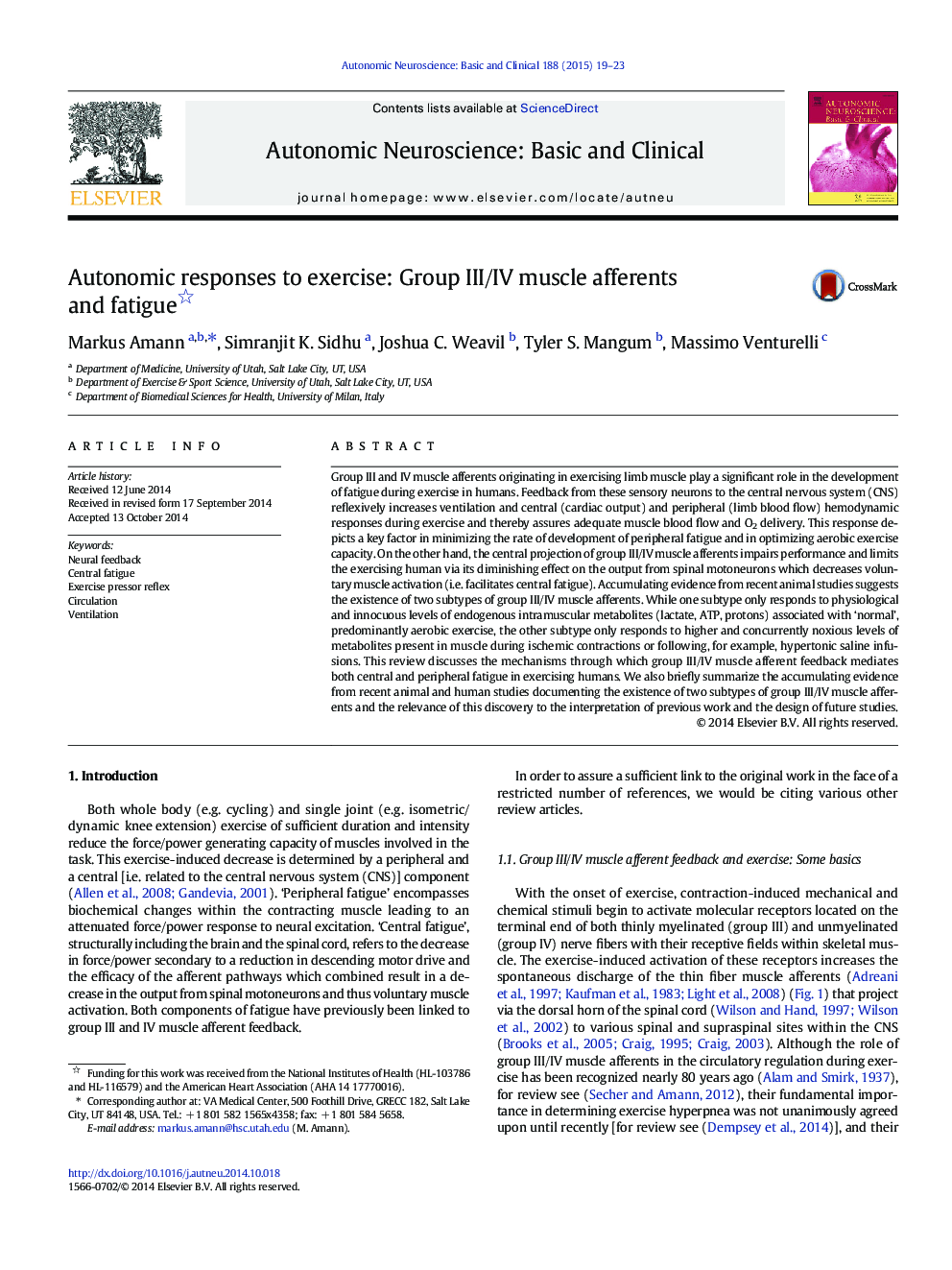| کد مقاله | کد نشریه | سال انتشار | مقاله انگلیسی | نسخه تمام متن |
|---|---|---|---|---|
| 3034617 | 1579527 | 2015 | 5 صفحه PDF | دانلود رایگان |
Group III and IV muscle afferents originating in exercising limb muscle play a significant role in the development of fatigue during exercise in humans. Feedback from these sensory neurons to the central nervous system (CNS) reflexively increases ventilation and central (cardiac output) and peripheral (limb blood flow) hemodynamic responses during exercise and thereby assures adequate muscle blood flow and O2 delivery. This response depicts a key factor in minimizing the rate of development of peripheral fatigue and in optimizing aerobic exercise capacity. On the other hand, the central projection of group III/IV muscle afferents impairs performance and limits the exercising human via its diminishing effect on the output from spinal motoneurons which decreases voluntary muscle activation (i.e. facilitates central fatigue). Accumulating evidence from recent animal studies suggests the existence of two subtypes of group III/IV muscle afferents. While one subtype only responds to physiological and innocuous levels of endogenous intramuscular metabolites (lactate, ATP, protons) associated with ‘normal’, predominantly aerobic exercise, the other subtype only responds to higher and concurrently noxious levels of metabolites present in muscle during ischemic contractions or following, for example, hypertonic saline infusions. This review discusses the mechanisms through which group III/IV muscle afferent feedback mediates both central and peripheral fatigue in exercising humans. We also briefly summarize the accumulating evidence from recent animal and human studies documenting the existence of two subtypes of group III/IV muscle afferents and the relevance of this discovery to the interpretation of previous work and the design of future studies.
Journal: Autonomic Neuroscience - Volume 188, March 2015, Pages 19–23
